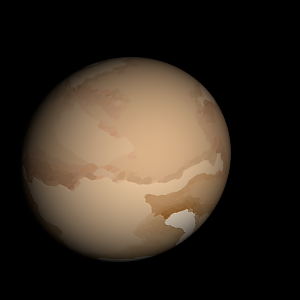|
|
Space Astro
|
Info for exoplanet "Iaphaë"
| Scientific (actual) data |
|---|
| Name | KOI-4878 b |
| Planet status | Confirmed |
| Radius | 0.0928 |
| Orbital period | 449.015 |
| Semi major axis | 1.137 |
| Orbit eccentricity | 0 |
| Inclination | 89.95 |
| Discovered | 2017 |
| Updated | 2022-10-03 |
| Tzero tr | 2454980 |
| Impact parameter | 0.2182 |
| Temperature (kelvin) | 258 |
| Publication | Published in a refereed paper |
| Detection type | Primary Transit |
| Radius measurement type | Primary Transit |
| Star name | KOI-4878 |
| Right ascension | 286.23° |
| Declination | 50.01° |
| Mag i | 12.123 |
| Mag j | 11.18 |
| Mag h | 10.874 |
| Mag k | 10.848 |
| Star metallicity | -0.22 |
| Star mass | 0.972 |
| Star radius | 1.068 |
| Star temperature | 6031 |
| Star alternate names | 2MASS J19045474+5000488 |
| Wikipedia article | KOI-4878 b |
Back
| |
| Fictional info (?) |
|---|
| Suggested name | Iaphaë |
| Planet type | Cold planet |
|
| Atmosphere | Carbonyl sulfide | 43% |
| Carbon dioxide | 43% |
| Ammonium hydrosulfide (NH4SH) | 13% |
| Hydrogen deuteride (HD) | 0.82% |
| Atmospheric pressure | 28 bar |
 |
| No known satellites |
| Google search for Iaphaë |
|
Website by Joachim Michaelis
|
|
|
|